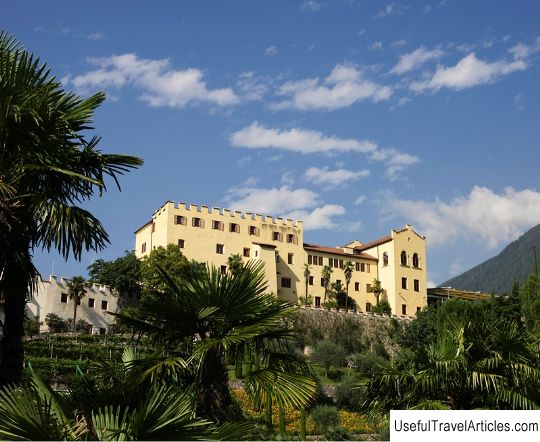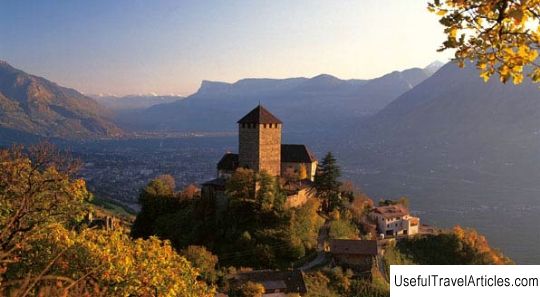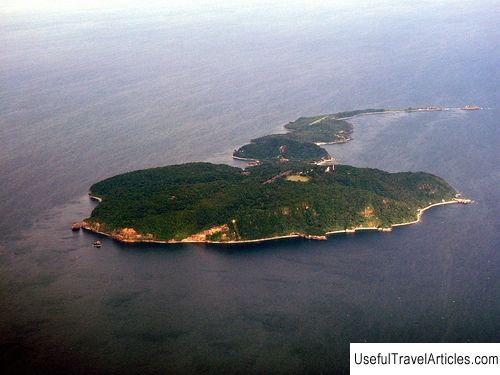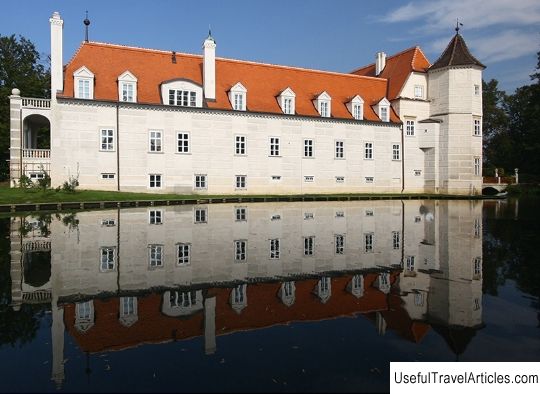Castle Trauttmansdorff (Castel Trauttmansdorff) description and photos - Italy: Dolomites
Rating: 8,6/10 (700 votes) 
Trauttmansdorff Castle (Castel Trauttmansdorff) description and photos - Italy: Dolomites. Detailed information about the attraction. Description, photographs and a map showing the nearest significant objects. The title in English is Castel Trauttmansdorff. Photo and descriptionTrauttmansdorff Castle is located south of the town of Meran in the Italian province of South Tyrol in the Dolomites. During the years of the fascist regime, this medieval castle was called Castello Di Nova after the nearby Torrente Nova stream. And it was built around 1300: the walls of the original structure and the ancient crypt are still visible from the southwest side of the current castle. In the middle of the 19th century, Count Joseph von Trauttmansdorff rebuilt the castle in a neoclassical style and expanded it to its modern size. Several years after the end of World War II, the building was abandoned, and only in 2000-2003 restoration work was carried out here. Facade, chapel, crypt, a huge rococo hall and the second floor where the Empress Elizabeth of Austria, known as Sisi, once lived. have been refurnished. Today the castle houses the South Tyrol Tourism Museum - the so-called Touriseum. Its expositions, which occupy 20 exhibition halls, acquaint with the history of the origin and development of tourism in this region. At the same time, the museum's collections are distinguished by originality and wit: here you can learn about the dangers that travelers who ventured to cross the Alps were exposed in the past, about the first local spa resorts and conquerors of local peaks. Three halls of the museum are dedicated to Empress Sisi. In 2001, the park surrounding Trauttmansdorff was converted into a botanical garden, called the Trauttmansdorff Castle Gardens. The gardens are open daily during warmer months. The park itself was laid out back in 1850, when restoration work was carried out in the castle. Sisi was a frequent visitor to this park, whose bronze bust was installed here after the assassination of the Empress in Geneva in 1898. Today, the Trauttmansdorff Botanical Garden contains about 80 flower beds with native and exotic plants, arranged according to the origin. There are also plants characteristic of South Tyrol. Other “floristic zones” include coniferous and deciduous trees from both the Americas and Asia, flowering oleanders, Mediterranean cultivated plants, including cypress, figs, grapes, lavender and the northernmost olive grove in Italy. A very interesting section of the park, in which you can see characteristic Italian, English and the so-called sensual gardens. The acquaintance with wollemia, one of the most ancient plants on Earth, which was considered extinct millions of years ago, is always of great interest. and was accidentally discovered in a single location in Australia only in 1994. In addition, the Trauttmansdorff Castle Gardens are home to Aesculapian snakes, an aviary and rice terraces, tea plantations and a Japanese floodplain forest.         We also recommend reading Mausoleum Aksaray description and photo - Uzbekistan: Samarkand Topic: Castle Trauttmansdorff (Castel Trauttmansdorff) description and photos - Italy: Dolomites. |




